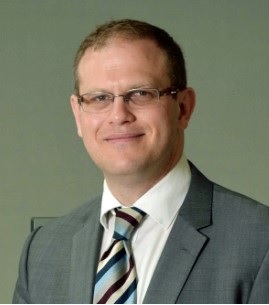Joseph Hardwicke
Technical Summary
Reconstruction of soft tissue defects following cancer or trauma at present rely upon complex surgery to transplant tissue. With the use of functionalised biological scaffolds based upon hyaluronic acid and other connective tissue constituents, cell metabolism can be supported providing a long-term reconstructive option reducing the need for donor tissue. The use of small molecules as part of the scaffold or for drug delivery (dextrin, decorin) can further optimise scaffolds in vitro, leading to reduced scarring and promotion of cell growth. Patient-specific scaffolds can be produced via additive manufacturing using data from 3D image analysis.
Following surgical reconstruction, the assessment of outcome can be objectively appraised using sensor systems: computer games technology can be employed to capture fine motion detail through body-mounted and non-contact measurement. Such data can also inform the design of the next generation of upper limb prostheses. Other non-invasive methods of clinical data capture may identify skin cancer prior to biopsy using high frequency scanning in the terahertz range, which will also help inform the design of custom sunscreens in the future to prevent skin damage.
Through my clinical work as a Consultant Plastic and Reconstructive surgeon and Clinical Lead for Innovation at the University Hospitals of Coventry and Warwickshire I am able to identify unmet patient need, lead on ideas and innovation development, and take a clinical-facing product through the clinical trial and validation process.
Selected publications:
Chouhan G, Moakes RJA, Esmaeili M, Hill LJ, deCogan F, Hardwicke J, Rauz S, Logan A, Grover LM. A self-healing hydrogel eye drop for the sustained delivery of decorin to prevent corneal scarring. Biomaterials 2019;210:41-50. DOI: 10.1016/j.biomaterials.2019.04.013
Ferguson EL, Naseer S, Powell LC, Hardwicke J, Young FI, Zhu B, Liu Q, Song B, Thomas DW. Controlled release of dextrin-conjugated growth factors to support growth T and differentiation of neural stem cells. Stem Cell Research 2018;33:69-78. DOI: 10.1016/j.scr.2018.10.008
Hardwicke J. 2019. The use of three-dimensional printing in surgery. In: Hargest R, Douek M. eds. Recent Advances in Surgery 39. New Dehli: Jaypee Brothers.
Kornmann NSS, Tan R, Mulder FJ, Hardwicke JT, Richard BM, Pigott BB, Pigott RW. Defining the aesthetic range of normal symmetry for lip and nose features in five-year-old children using the computer-based program SymNose. Cleft Palate Craniofac J. 2019;56:799-805. DOI: 10.1177/1055665618813236
Moody JA, Botham SJ, Dahill KE, Wallace DL, Hardwicke JT. Complications following completion lymphadenectomy versus therapeutic lymphadenectomy for melanoma - a systematic review of the literature. Eur J Surg Oncol. 2017;43:1760-1767. DOI: 10.1016/j.ejso.2017.07.003
Moody JA, Ali RF, Carbone AC, Singh S, Hardwicke JT. Complications of sentinel lymph node biopsy for melanoma - a systematic review of the literature. Eur J Surg Oncol. 2017;43:270-277. DOI: 10.1016/j.ejso.2016.06.407
Bella H, Kornmann NSS, Hardwicke JT, Wallis KL, Wearn C, Su T-L, Richard BM. Facial aesthetic outcome analysis in unilateral cleft lip and palate surgery using web-based extended panel assessment. J Plast Reconstr Aesthet Surg. 2016;69:1537-1543. DOI: 10.1016/j.bjps.2016.05.006

